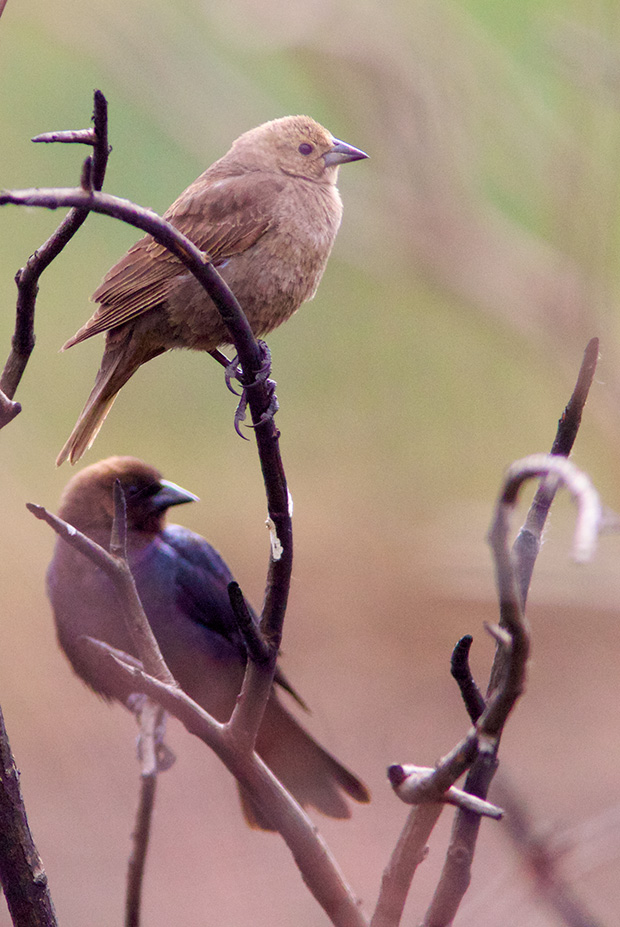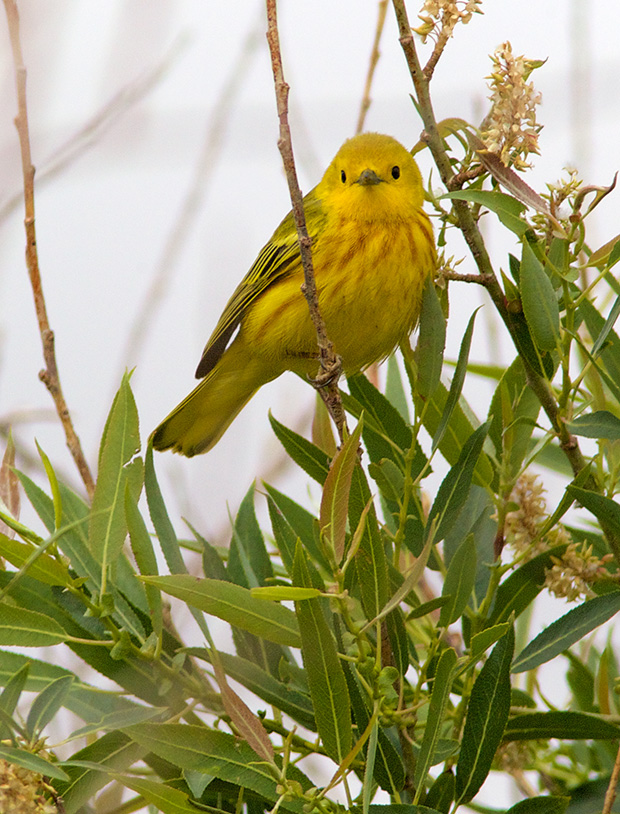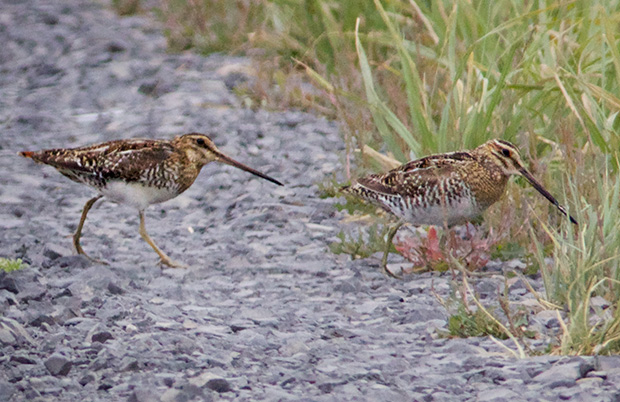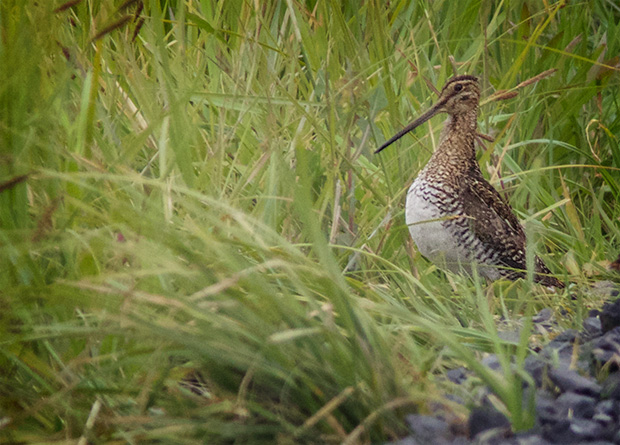I’ve already said that my favorite shots from the Malheur portion of the trip were those of the Snipes, birds I’d been pursuing in vain, for years. Another ambition I’ve had for several years now is to see the birds I see overwintering in Puget Sound where they live the rest of the year. I saw that last year when I got pictures of the grebes with babies on their backs.
This year I unexpectedly got shots of this female Common Merganser with her ducklings as I drove through the refuge.
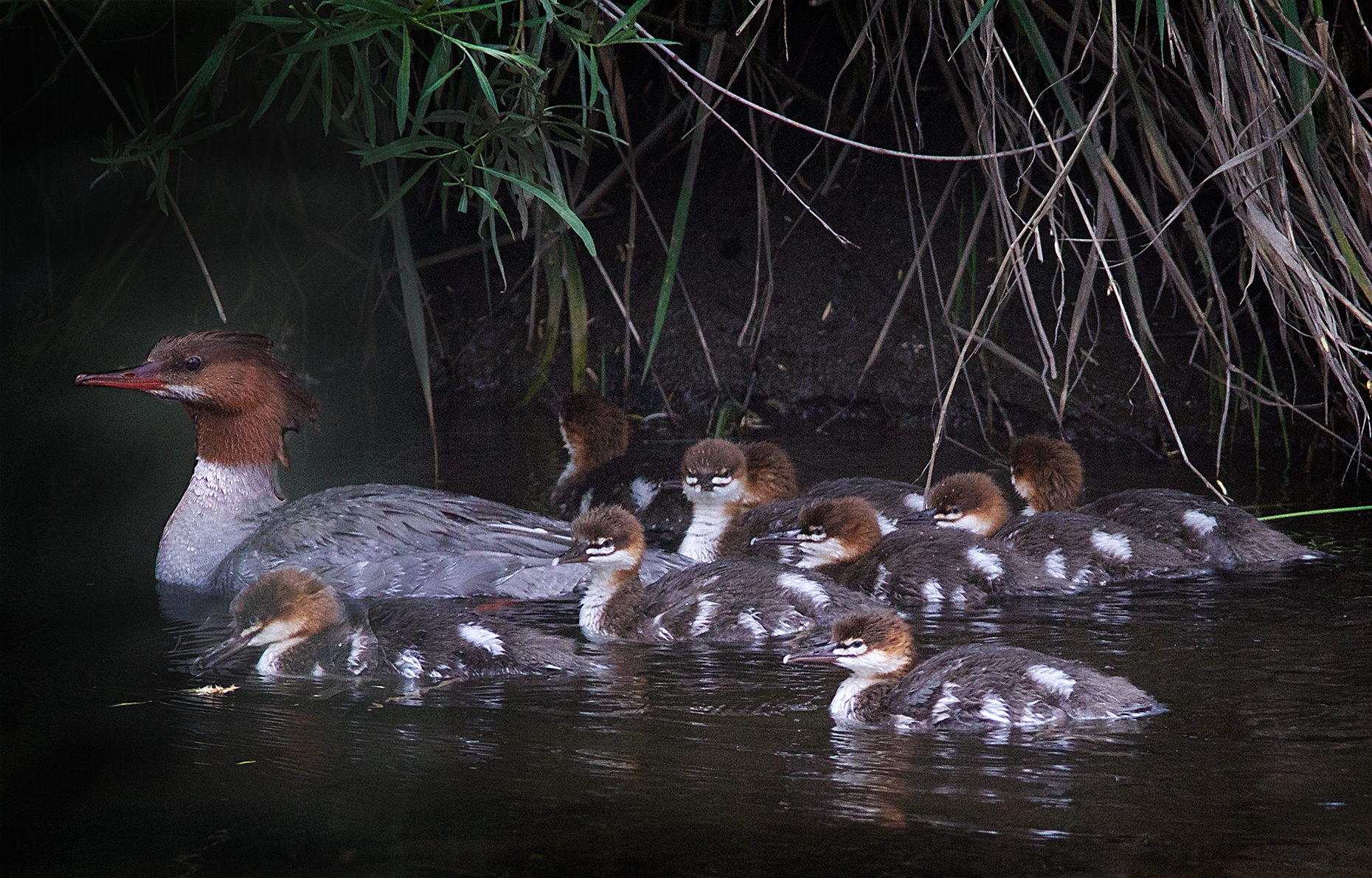
It was actually a challenge to get these shots because the mother, naturally enough, tried to avoid me seeing her or her chicks. There was actually at least three or four more chicks, but there was no way I was going to get them all in a single frame. Most shots actually had huge blurry spots because the creek was edged with tall grass, but ‘burning’ those spot in Photoshop helped to even the tones out.
Even I could hardly avoid going “Awww” as I took these shots; these might be the cutest ducklings I have ever seen.
I’m not going to make the same claim for these American Coot chicks, which seem about as adorable as a vulture with their bald, red heads and odd-color “fur,” but they’re so homely that I do find them cute, and I don’t know of a more attentive parent,
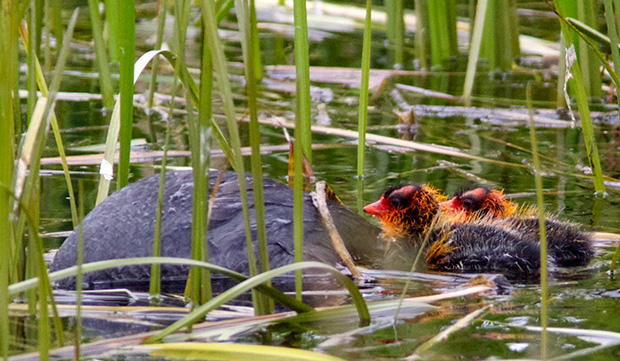
or a more demanding child.
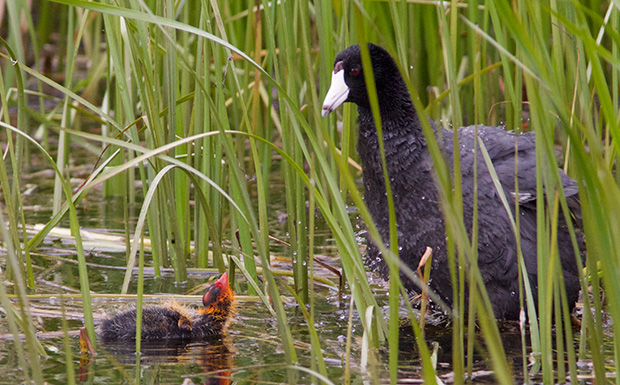
Unlike the Common Merganser, the American Coot seemed largely indifferent to me and my truck, so I was able to stick around and get all the shots I wanted.
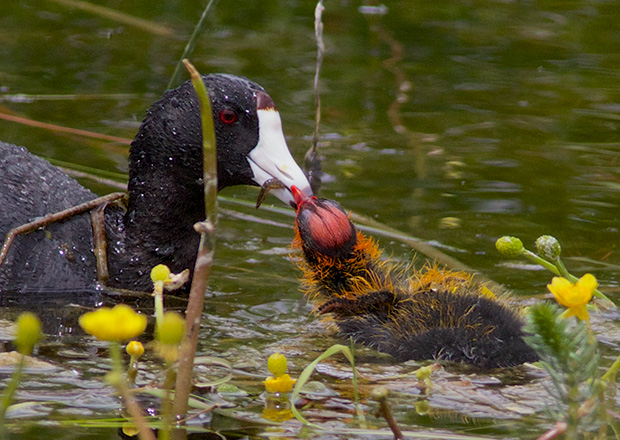
Getting these shots as I was leaving for Big Bear capped off my two days at Malheur. It was a great two days.

